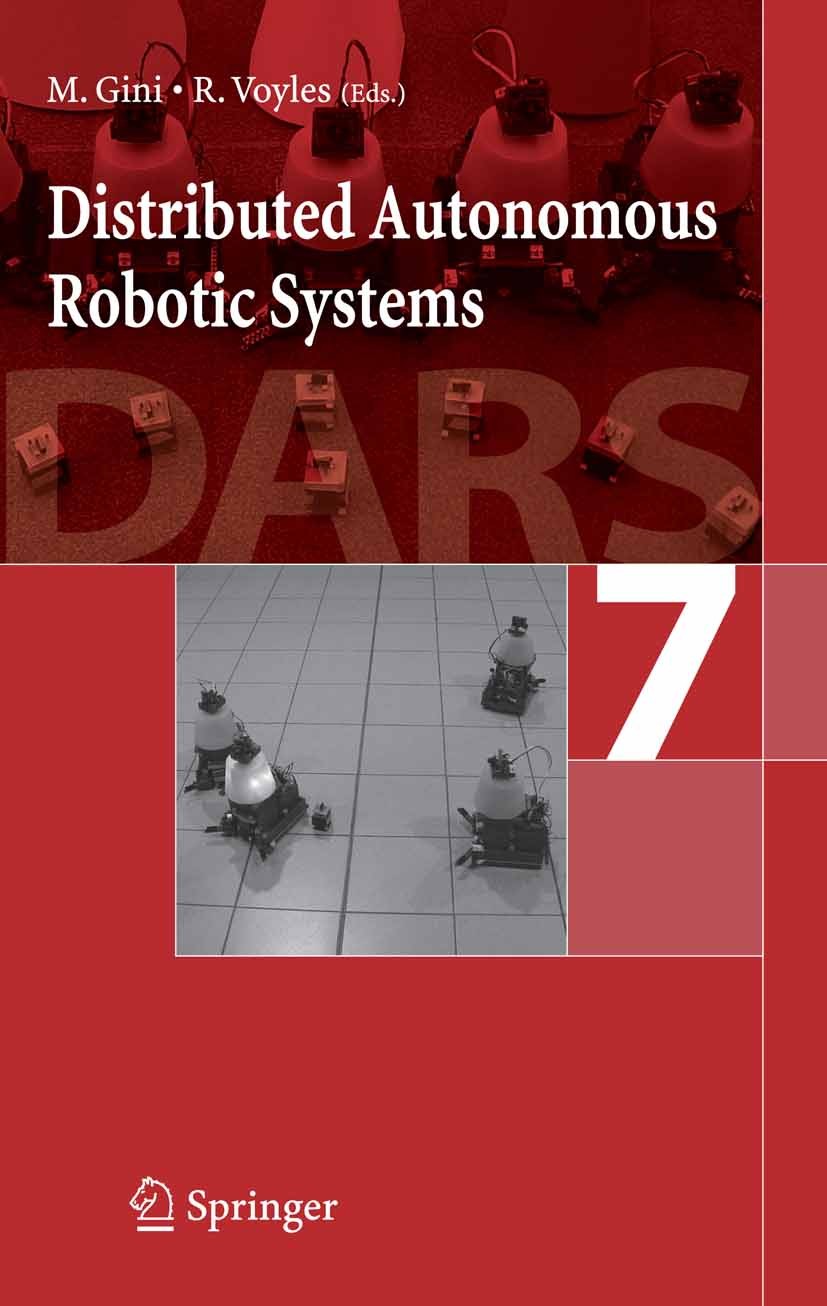| 书目名称 | Distributed Autonomous Robotic Systems 7 | | 编辑 | Maria Gini,Richard Voyles | | 视频video | http://file.papertrans.cn/282/281759/281759.mp4 | | 概述 | Includes the papers that have been selected by an international program committee for presentation at the 8th International Symposium on Distributed Autonomous Robotic Systems.Papers present state-of- | | 图书封面 |  | | 描述 | The goalof the 8th Symposium on Distributed Autonomous Robotic Systems (DARS) is to exchange and stimulate research ideas to realize advanced d- tributed robotic systems. Technologies, algorithms, and system architectures will be presented and discussed during the symposium. DARS 2006 builds upon past successes and provides an exciting envir- ment for researchers to present and discuss their novel theoretical results, - plementations, and applications. DARS successfully took place in 1992, 1994, and 1996 in Japan (Riken, Wako), in 1998 in Germany (Karlsruhe), in 2000 in Knoxville (Tennessee, USA), in 2002 at Fukuoka (Japan), and in 2004 at LAAS in Toulouse (France). DARS 2006 will be held in the Minneapolis campus of the University of Minnesota, in the Electrical Engineering and Computer Science building. A total of 42 technical papers were submitted by authors from multiple countries. All the submissions were rigorouslyreviewed by the ProgramC- mittee. Of those submissions 24 were accepted. The overall outcome of the revision process is an excellent selection of papers that showcase the research in distributed autonomous robotics today. We would like to take this opportunity to th | | 出版日期 | Conference proceedings 2006 | | 关键词 | architecture; control; modeling; robot; robotics | | 版次 | 1 | | doi | https://doi.org/10.1007/4-431-35881-1 | | isbn_softcover | 978-4-431-54730-3 | | isbn_ebook | 978-4-431-35881-7 | | copyright | Springer-Verlag Tokyo 2006 |
The information of publication is updating

|
|
 |Archiver|手机版|小黑屋|
派博传思国际
( 京公网安备110108008328)
GMT+8, 2026-1-11 17:07
|Archiver|手机版|小黑屋|
派博传思国际
( 京公网安备110108008328)
GMT+8, 2026-1-11 17:07


